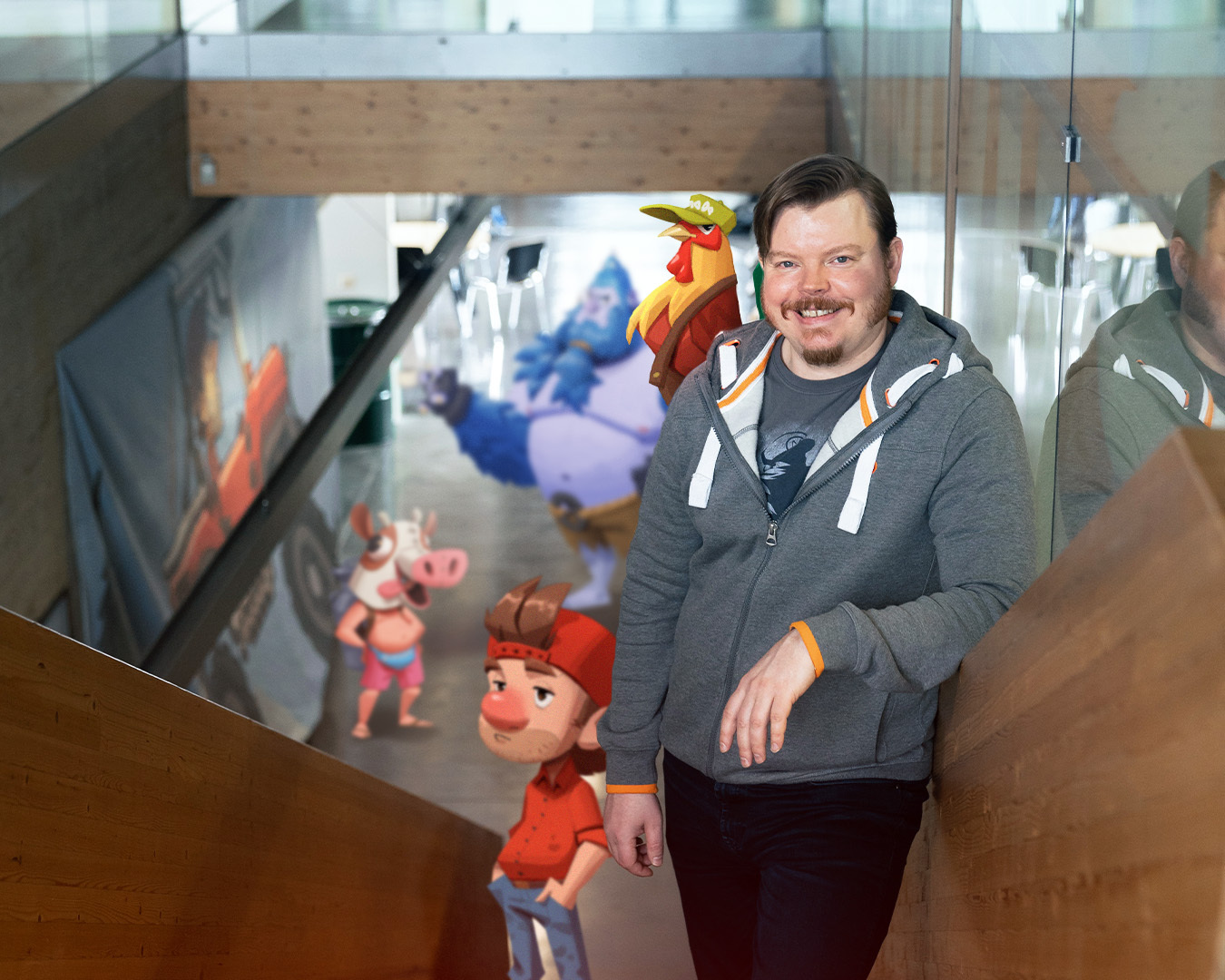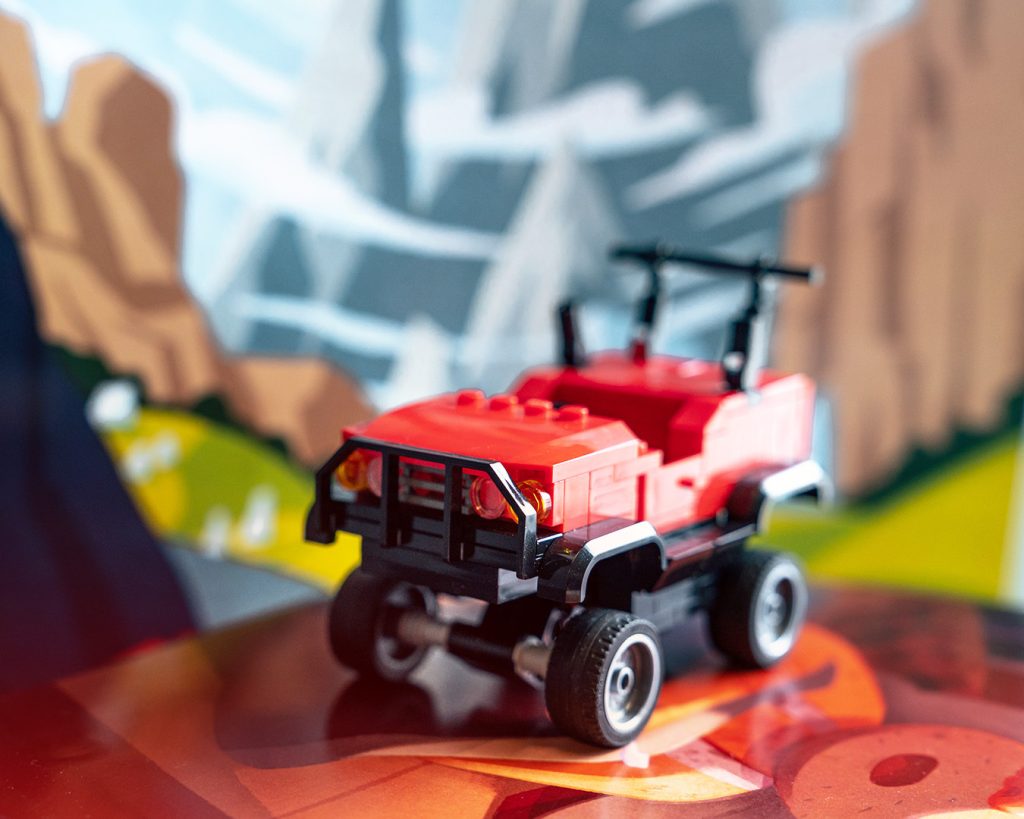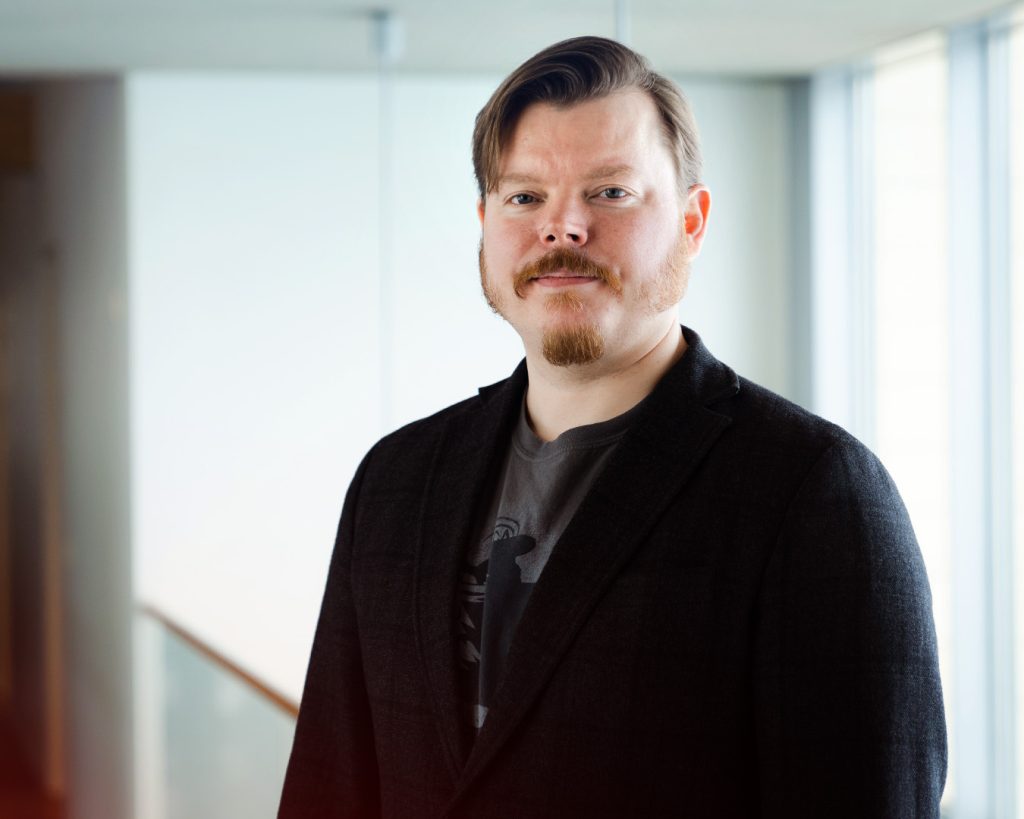Celebrating 10 years at Fingersoft

My journey of growth and creativity
By Ville Rauma
January 6th marked my 10th anniversary at Fingersoft. The company’s development during this time has been immense. I joined as the 12th employee in 2014, around the time when Hill Climb Racing had reached its first 100 million downloads. Today, that number is over 2 billion over 2 games, with over 50 million monthly active players. In terms of employees we’re standing at 115, and revenue-wise we’ve grown from around 15 to 24 million euros, and we’ve been consistently profitable the whole time.
Out of the past ten years, I spent about 2 years as a backend developer/project manager, and 8 years as the COO, of which about half a year as interim CEO. I’ve worked with 3 CEOs and several different leadership teams and board configurations, and I’m immensely grateful for all of my colleagues over the years for helping me learn to be a better professional and a better person.
I decided to write this article as a little thank you, with the goal of giving back a glimpse into lessons learned over the years. These views are my own, but I’m confident that Fingersoftians will recognize most if not all of them as lessons we work to adhere to.
10 years, 10 lessons
Looking back at the decade, there is a staggering amount of work, failures, and achievements that have contributed to the continued success of Fingersoft. Based on my experiences I have collected 10 lessons that I/we have learned over the years.
Most of these lessons are personal and have a business impact at the same time, have shaped me and have been essential in keeping Fingersoft afloat in the extremely competitive mobile games market.
Now of course there are many more lessons than these, but I tried to find ones that might be simple and useful perspectives for anybody in the games industry.
1. Utilize your strengths
The first lesson comes from our company’s origin story. Toni (Fingerroos) founded the company, made camera applications and then leveraged the popularity of those apps to cross-promote Hill Climb Racing, which has become the most downloaded racing game on the planet.
The question to ask is: “What do we have that we can leverage to do better at X?” It can be virtually anything, but in our case, it was originally the viral success of the camera applications used to create the viral success of Hill Climb Racing, which we utilize to this day to engage with players worldwide.
Your strengths could be, for example:
- Popularity in socials, YouTube, or Discord
- Deep knowledge of some specific area
- Unique/rare skill sets, capabilities, or technologies
- Weird/unique visual style
One Fingersoft example is our continued investment in the Hill Climb Racing brand and core gameplay excellence. I doubt very many people would have started to build a world or a brand around a 2D physics racing game, but we did. And of course, our embracing the “weird” which makes our games so interesting and wonderful for so many people.
2. Always think players first
We have always excelled at creating core gameplay that feels good, having you at the edge of your seat trying to get further, be better, and have a good time. This comes directly from our developers and today it is even written in our vision, values and game development pillars.
Our company vision states that “Together we are creating a caring environment where creative talent has the best possible chances to provide successful games that feel great to play!”
Our values state among other things that “We make fun games that we love.”
Our game development pillars are full of statements derived from our way of making games. For example:
- Provide best in niche gameplay
- Make it smooth
- Give good value for money
I have always believed that players can sense the “soul” of a game, in essence, whether or not the developers cared about the game they were making. So we’re constantly trying to create an environment and make choices so that this level of commitment is possible.
That said, we still need to strive for excellence in all areas of game development – from team structure and culture to processes to design to technology – but the final flourish can only be achieved by a team that believes in what they are doing and works diligently and consistently to get there.
Our umbrella term for this approach is Think Players First.
An example of this principle is our careful approach to monetization vs. freedom of gameplay. We are always working to balance the experiences in a way where people can enjoy our games by watching ads but can have an even better experience if they choose to support us directly. This is a complicated balance to maintain, but it has worked well for us so far.
3. Aim to be cost-effective
Due to our relatively low LTV but a massive number of active users we have, we’ve always had to think cost-effectively when building or choosing technologies and services. Even still, we have to constantly keep this in mind and review our choices to keep costs from getting out of control.
There are some easy principles here to follow:
- Get competing offers when choosing partners and carefully consider the balance of cost vs. other requirements you have
- Learn and utilize good negotiation tactics and make sure to re-negotiate occasionally as prices always rise
- Review what you’re buying regularly and make sure you’re not paying for something that isn’t providing value
What about quality? We have very high standards for quality, and we’re raising the bar constantly. Of course, it’s a fact that every company needs to operate at a level that they can afford, but we’ve managed to punch above our weight class consistently.
4. Own key competencies, technology & services
We’ve had several cases of key technologies disappearing from under us for one reason or another. From these, we’ve learned that it’s paramount to internalize key technologies and services where possible. In this way, you get control over costs and outcomes in that specific area.
An example of this principle is our extensive LiveOps stack built by our extremely talented in-house technology team. We have essentially built a full-service technology stack for running cross-platform & cross-device games globally at a massive scale. If we had utilized third parties for our LiveOps technology stack instead of building it ourselves, I dare say the best case is that we’d be much less profitable and valuable as a company.
5. Be brave
Our first big leap was the decision to develop Hill Climb Racing 2. What that meant for us was that almost everybody in the company jumped into making Hill Climb Racing 2, while a skeleton crew was left to take care of our main revenue source, which was of course the original Hill Climb Racing. We knew that its revenue would likely decrease due to fewer updates (which it did), and it was a big risk.
In this case we proved that the risk was the right one to take as Hill Climb Racing 2 became a very successful product and has found its own audience. Both games are doing great thanks to the efforts of our awesome product development, infrastructure, and organizational teams. For me personally, Hill Climb Racing 2 is living proof that we can and should increase our ambition to new heights, and Hill Climb Racing is proof that long-term commitment pays off as it’s a hugely popular game after 12 years of live operations.

6. Be yourself
For a long time, we were unsure how to brand Fingersoft or how to define key aspects of our culture. Of course, everyone had their own ideas, and we even experimented with some like a “punk” attitude towards game development and publishing which we subsequently abandoned.
Our current understanding of what Fingersoft is and what our values are only came about after extensive soul-searching using workshops, interviews, and even some helpful partners and a lot of work. The key thing there was to find what our employees thought was important in our culture and search for commonalities. Then we created a Values package and started using it to find out if it holds true (seems to).
We’ve found that in terms of culture, you need to mainly look inside. Sure, it’s smart to learn how other companies work, but I think it’s a bad idea to try to copy a culture just because someone else seems to have their act together. Reality is often much more complex than you’d expect.
A personal angle to this lesson has been that I’ve learned to trust my instincts and intuition much more during the past several years. For example, I have been pushing hard to create something more than a game company as I believe that with the right culture and people, a creative company could essentially last indefinitely, because there is no end to human creativity.
7. Respect & trust
This is a very personal thing to me as I’m one of those people who tends to give my colleagues trust by de-facto and then follow up to see if it was mis-sized/misplaced. This is because, in my experience, the best people tend to thrive with this approach as they have the freedom to fail, learn, and develop based on their own ideas which makes it a much more effective way of building know-how and independent thinking.
This approach isn’t the best for every situation. For example, I’d have loved to have mentors in many of my jobs but often didn’t have that opportunity. Good mentors can help remove a lot of unnecessary pain and focus the pain that has to happen on the things that matter.
In Fingersoft’s case, we’ve taken these aspects to a very deep level where respect and trust are a part of our key values. We operate on a basis of autonomous teams and minimizing hierarchies to only what’s necessary. A good principle is to delegate the appropriate decision-making powers to the level where the best knowledge and capability to do so exists. We do not shy away from having structure where it’s needed, but neither do we enforce a single model, especially to creative teams as every team and project is different.
8. Think long-term
We’ve worked for many years to instill the idea of thinking long-term. Building games that are meaningful from one generation to the next, and which evolve with the people who make them and play them. A key thing is also building the organization, teams, processes, and technologies that can support this ever-regenerating ecosystem of creativity.
I was influenced quite a bit by Simon Sinek’s book “The Infinite Game” and the idea that we should be working for the purpose of continuing to play rather than to win. There is always another idea, another vision to try out, and a chance to make something awesome.
An example of a long-term decision has been our commitment to in-house development of our game and backend technologies. Today, as the industry is undergoing major changes, we have the flexibility to be able to change vendors, and change our workloads with different services which might be very difficult to do if we had chosen to depend more heavily on third parties.
9. Invest in creativity
At Fingersoft, creativity is at the core of our existence. And, while it’s easy enough to formulate ideas, it’s a very different matter to create viable grand visions for products that take years to develop by an experienced team.
We’re still working on our internal systems on how to encourage, build, test, and scrutinize creative ideas but we currently have several methods either in use or in development for enabling creativity. Some examples:
- Every employee can request 10 days of “Tinkering time” for their projects.
- Demo-Days held approximately 11 times per year, which is 1.5 days for planning and developing prototypes, learning, or other useful tests.
- Future Game Camp, which is a one-week playable prototype development based on pitches and temporary teams built around those.
- Game Funnel playbook for building and creating the team and processes after the project has been greenlighted.
A good outcome from these systems has been that we have a vibrant culture of developing prototypes, testing different tools and technologies, and sharing those with our peers.
We still have more work to do on how to choose and advance the best projects but, in my view, we definitely have the right direction.
10. Continuous learning
Probably our most often used idiom is “It’s OK to fail as long as you learn from it.”
While easy to say and understand, it’s a challenging principle to uphold, especially when money is involved. Nevertheless, this is the most important lesson there is, as the only way to get better is to try things, reflect, and internalize the learnings, succeed or fail.
My personal process is:
1. Admit my mistake quickly when I realize it. As a leader, I also try to admit my mistakes publicly in the appropriate context to set a good example.
2. Analyze what I could have done to avoid or at least mitigate the bad outcome.
3. Share the learnings.
An example of continuous learning is where we made some relatively big organizational changes and took OKRs into use at the beginning of 2023 at the same time. My failure was not understanding the amount of preparatory work that is necessary to make these sorts of changes in a large organization.
I operated on the expectation that it’s enough to prepare with a small team, gather localized feedback, then do an introductory presentation, and finally teach the practicalities in 1 on 1 meetings to relevant stakeholders.
It turns out that more preparatory work is required. Today I’d increase the amount of people and time spent on the preparatory phase, ensure that impacted people are involved personally and only execute public actions once it’s certain that large enough alignment has been achieved.

11. Bonus tip: Nothing is impossible
Let’s consider what is definitely impossible:
- Creating two games with over 2 billion downloads and the world’s most downloaded racing game with a handful of people in Oulu, Finland (and later in Helsinki, I didn’t forget you!)
- Creating the company, teams, technologies, know-how, services, partnerships, and processes to run those games for over a decade
To me, working in the games industry is about making something awesome together with smart and talented people who get to do what they love and who want to get better at it. Everything else is an enabler.
I started on the 6th of January in 2014 as a bright-eyed backend developer working on massively scalable backend technology to be used in Hill Climb Racing.
Ten years later I’m an experienced C-level executive, we have several games in development, our teams are more talented than ever, and we are extremely well positioned to grow Fingersoft beyond what anyone thinks is possible.
I don’t know what you are doing for the next ten years, but I will be working on things that might seem impossible to somebody else.